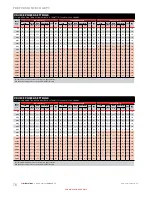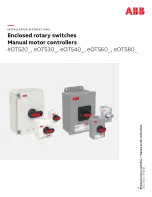
92
A2A
SIMULATIONS :::
ACCU-SIM V35B BONANZA
SYSTEMS DESCRIPTION
FOR SIMULATION USE ONLY
lights are located on the left end of the subpanel. Flap and
tab position indicators, the cowl flap control, and the flap
switch are near the center of the subpanel. On the right end
of the subpanel are the circuit breakers, as well as the land-
ing gear switch and landing gear position indicator lights.
Attached to the lower center section of the subpanel are the
power plant controls and auxiliary fuel pump switch.
ANNUNCIATOR SYSTEM
WARNING LIGHTS
A warning light placarded ALT OUT is located on the pilot’s
floating instrument panel below the flight instruments. The
warning light for the alternator will illuminate when the
output from the alternator is nearly zero or when an alter-
nator overvoltage occurs.
WARNING LIGHTS (D-10354 AND AFTER)
Two warning lights, placarded ALT and STARTER
ENERGIZED, are located on the pilot’s floating instrument
panel below the flight instruments.
The warning light for the alternator will illuminate when
the output from the alternator is nearly zero or when an
alternator overvoltage occurs.
The starter energized warning light will remain illumi-
nated after starting if the starter relay remains engaged
after starting.
WARNING LIGHT CONTROL SWITCH
Located on the pilot’s floating instrument panel near the
warning light(s) is a switch placarded TEST-BRT-DIM-
WARN LIGHTS. When the switch is held upward in the
spring-loaded TEST position, the warning light(s) and the
four landing gear position indicator lights will illuminate if
none of the lamps require replacement. When released, the
switch will return to the BRT position.
If the switch is in the bright (BRT) position, the warn-
ing light(s) and the landing gear position indicator lights
will illuminate at high intensity. This position should be
selected during the daytime and at other times when high
ambient light levels are present in the cabin.
The DIM position allows the lamps to illuminate to a
lower intensity. This position is generally reserved for night
operations.
GROUND CONTROL
Steering is accomplished by use of the rudder pedals through
a linkage arrangement which connects the nose gear to the
rudder pedal shaft. Nose wheel straightening is accom-
plished by engagement of a roller with a track as the nose
wheel is retracted. The steering link attaches to the steering
mechanism on the nose gear with a swivel connection which
permits the mechanism to disengage when the nose gear is
retracted and operation of the rudder pedals will have no
tendency to turn the nose wheel with the gear retracted.
The minimum wing tip turning radius, using full steer-
ing, one brake and partial power, is 26 feet 4 inches.
WING FLAPS
On airplanes prior to D-10179 the wing flaps are controlled
by a three-position switch, UP, OFF and DOWN, located in
the subpanel, above the power quadrant. The switch must
be pulled out of detent before it can be repositioned. A dial
type indicator has markings for UP, 10° , 20° and DN. The
indicator is located to the left of the control column.
Limit switches automatically turn off the electric motor
when the flaps reach the extremes of travel. Intermediate
flap positions can be obtained by placing the switch in the
OFF position as the flaps reach the desired position during
flap extension or retraction.
On airplanes D-10179 and after the wing flaps have three
positions; UP (0°), APPROACH (15°), and DOWN (30°), with
no intermediate positions. A flap position indicator and a
control-switch are located on the subpanel, above the power
quadrant. The switch must be pulled out of a detent to
change the flap position.
LANDING GEAR
The landing gears are operated through adjustable linkage
connected to an actuator assembly mounted beneath the
front seats. The actuator assembly is driven by an electric
motor. The landing gears may be electrically retracted and
extended, and may be lowered manually.
CONTROL SWITCH
The landing gear is controlled by a two-position switch on
the right side of the subpanel. The switch handle must be
pulled out of the safety detent before it can be moved to the
opposite position.
POSITION INDICATORS
The landing gear position indicator lights are located adja-
cent to the landing gear switch handle. Three green lights,
one for each gear, are illuminated whenever the landing
gears are down and locked. The red light illuminates any
time one or all of the landing gears are in transit or in any
intermediate position. All of the lights will be out when the
gears are up.
Testing of the landing gear position indicator lamps, as
well as selection of either bright or dim illumination inten-
sity, is accomplished with the warning light control switch
located on the pilot’s floating instrument panel.
Summary of Contents for BONANZA ACCU-SIM V35B
Page 1: ...A2ASIMULATIONS BONANZA ACCU SIM V35B BONANZA ...
Page 3: ...A2ASIMULATIONS BONANZA ACCU SIM V35B BONANZA ...
Page 5: ...www a2asimulations com ACCU SIM V35B BONANZA A2ASIMULATIONS 5 FOR SIMULATION USE ONLY ...
Page 27: ...www a2asimulations com ACCU SIM V35B BONANZA A2ASIMULATIONS 27 FOR SIMULATION USE ONLY ...
Page 58: ......
Page 68: ...68 A2ASIMULATIONS ACCU SIM V35B BONANZA www a2asimulations com FOR SIMULATION USE ONLY ...
Page 112: ......
















































